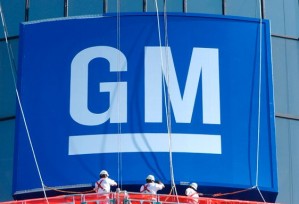Analysts see positives in General Motors’ third-quarter earnings report
Meet the “new” GM. Same as the “old” GM?
Not really, say some auto industry experts who analyzed General Motors Corp.’s announcement Monday of a third-quarter loss of nearly $1.15 billion after emerging in July from a government-aided bankruptcy.
A loss is a loss, but experts who have watched the iconic automaker lose $82 billion in the previous three calendar years think the new GM’s numbers signal better times ahead. And that bodes well for the 2,500 workers at GM’s Fairfax assembly plant, which in January will add a third shift and more than 900 employees.
In perhaps the most significant sign of progress, GM said its finances had improved to the point that it could begin repaying its government loans early. GM owes the federal government $6.7 billion, and the company plans to make a $1.2 billion payment in December and similar quarterly payments after that.
Fritz Henderson, GM’s chief executive, speaking at a news conference in Detroit, said the automaker’s performance showed “some signs of progress and some signs of stability” and a “good, strong liquidity position.”
Some analysts remain skeptical of GM’s ability to repay the American taxpayer. A recent report from the Government Accountability Office concluded that repayment of the money to rescue both GM and Chrysler was unlikely.
The Treasury Department had not expected GM to begin repaying its requirement until it came due in July 2015.
“It is my mission to disprove the GAO, to create value in the company so the taxpayers can get a return on their investment,” Henderson said.
GM’s financial results followed good news from Ford Motor Co., which recently announced a third-quarter profit and moved workers to a third shift at its Claycomo assembly plant. Ford, the only Big Three automaker that did not accept government loans, made money in the second quarter.
Under GM’s controversial bailout, the federal government provided about $50 billion in loans. About $13.4 billion remains in an escrow contingency account. Of the total debt, $6.7 billion is earmarked to be repaid. Most of the rest was converted into a 60.8 percent ownership stake held by the Treasury Department.
GM also owes the Canadian government $1.4 billion. Starting next month, it will make quarterly payments of $200 million on that debt.
The third-quarter report contained what GM called “preliminary managerial results.” The numbers covered the period from July 10 — when GM sold its desirable assets to a new company and exited bankruptcy protection — through Sept. 30.
GM said the numbers were difficult to fully interpret given its transformation through bankruptcy that included layoffs, factory closings and cuts in the number of dealerships
After burning through billions of dollars in cash in the worst months of the recession in late 2008 and early 2009, GM said it generated $3.3 billion in cash in the third quarter. Revenues were $28 billion, nearly $5 billion more than the second and final quarter of the old GM.
GM held on to its domestic market share with 19 percent of total U.S. sales. That impressed some analysts, given the timing of the landmark bankruptcy.
“We have significant work to do, but (Monday’s) results provide evidence of the solid foundation we’re building for the new GM,” Henderson said in a statement.Two of the vehicles GM is relying on are the new Buick LaCrosse and Chevrolet Malibu. Both are built exclusively at Fairfax. GM is adding the third shift there to build more LaCrosses and Malibus.
The LaCrosse was one of several new models that GM introduced as it emerged from bankruptcy. Others included the Chevy Camaro, the Chevy Equinox, the Cadillac SRX and the GMC Terrain.
“People are considering GM products, especially the new models, since the bankruptcy,” said Michelle Krebs, a senior analyst with Edmunds.com, a Web site for auto buyers. “It’s a hopeful sign, as long as GM can continue to introduce new products, market them well and keep costs in line.”
According to Edmunds.com, GM had 21.1 percent of the U.S. market share in October, its highest level since April.
“Remember nobody knew what would happen if a big automaker like GM went into bankruptcy and whether people would continue to buy GM cars,” Krebs said. “So the fact that people are looking at their products and many are purchasing them is encouraging.”
GM sold 3,228 units of the LaCrosse in October, the first full month since it hit dealer showrooms. That was more than double the number sold in October 2008 with the previous LaCrosse.
Dealers sold 12,084 Malibus last month, an 11 percent jump from October 2008. The Malibu remains among the most popular cars in GM’s portfolio.
“All the dealers I’ve talked to say they’re moving as many LaCrosses as they can get,” said John Melton, the president of United Auto Workers Local 249 in Kansas City. “It’s just a beautiful car, and we keep talking about the Buick because it’s the new one. But the Chevy Malibu shouldn’t be overlooked; it’s a great car as well.”
The bankruptcy bought GM some time in its attempt to lure customers to buy its new vehicles. With the aid of the federal government, GM wiped out most of its debt.
The company had $17 billion of debt on Sept. 30. On July 9, the final day of the old GM, the company had $94.7 billion in liabilities.
But obstacles remain, as industry observers expect slower fourth-quarter sales, partly due to the absence of the Cash for Clunkers program that sparked the third quarter. “This is a company not without challenges,” said Krebs, the Edmunds analyst. “But if you look at where GM was last spring, the outlook is brighter than expected. Nobody really knew if GM would survive. Now they have a chance.”
Sourced via kansascity.com







